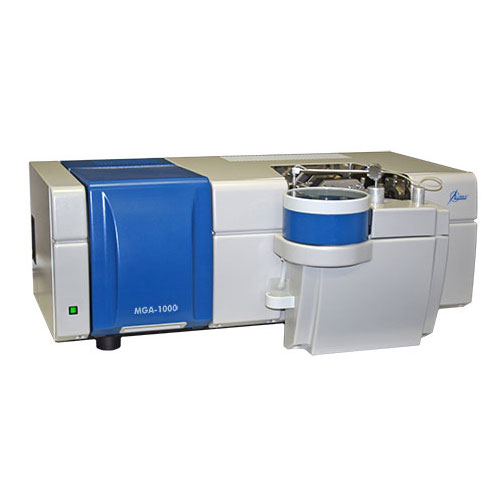Atomic absorption device
Atomic absorption spectroscopy or spectroscopy is based on the principle of light absorption by free atoms. All atoms absorb light at their own wavelength (based on the atom’s energy requirement). In other words, each element at a particular wavelength absorbs light and absorbs no light at other wavelengths. For example, in a sample with several elements (suppose copper, lead, iron, and nickel), copper absorbs only light that has the characteristics of Cu Cu wavelength. In addition, the amount of light absorbed is directly proportional to the number of elements in the path of light. Atomic absorption apparatus is a laboratory equipment that has many applications in the analysis of elements, especially heavy metals.
Lambert Beer’s Law on Atomic Absorption
In practice, measuring the amount of light absorbed by a standard solution at a specified concentration in an atomic absorption device can lead to a standard curve. Then by comparing these data with the amount of light absorbed by the unknown sample with the atomic absorption device, the value of the unknown sample is obtained. According to Lambert’s and Beer’s law, the amount of light absorbed at a given wavelength is directly related to the concentration of atoms in the environment. Lambert Bayer’s law states that the light absorbed in a transparent environment does not depend on the intensity of the light, but rather on each layer of the medium absorbing a constant amount of light. Lambert Bayer’s law states that absorbed light is directly related to the number of light-absorbing atoms in the environment.
Mathematically the amount of light I0 passes through an environment of length X and concentration C, the intensity of the light remaining I after passing through the environment is:
I = I0e-KCX
In this respect K will be the relative constant (absorption coefficient). Thus, the absorption of the medium, or A, is obtained.
A = log (I0 / I) = KCX
This equation shows that the absorption of A in an environment is linearly dependent on the concentration of the light-absorbing atoms in the environment.
Also, the atomic absorption coefficient of each medium (absorption constant) K can also be obtained by drawing a calibration curve containing the amount of absorption measured against different concentrations. The slope of the calibration curve is also easily accessible. In this way, the concentration of unknown samples can also be easily determined based on the absorption values of the points.
Atomic absorption spectroscopy analysis steps
The samples must first be made into a clear homogenous solution for analysis by atomic absorption spectrometry.
A blanket or control solution should be provided. That is, zero solvent of the element being analyzed by atomic absorption.
A series of standard solutions should be prepared, containing specific but different concentrations of the elements to be analyzed. These standards are used to construct the calibration curve.
The amount of blank or control solution should be read by the atomic absorption device. This means zero absorption value for the concentration of nothing.
All standards must be read one by one with the Atomic Absorption Device.
For the Blank solution and other standards along with their absorbance values, a calibration curve sample must be drawn.
The unknown sample is also analyzed by atomic absorption spectroscopy, by comparing the absorbance value of this sample and comparing with the calibration curve values of the absorbance value of the unknown sample.
Technical Specifications
|
Specification |
|
| 185–900 nm |
Spectral range |
|
up to 4500 K/sec |
Furnace heating rate |
|
< 1 l/min |
Argon flow rate
(high purity argon) |
|
3000 °C |
Maximum temperature of the furnace atomizer |
|
800 analysis cycles |
Tube lifetime |
|
800x475x310 mm |
Size |
|
50 kg |
Weight |


